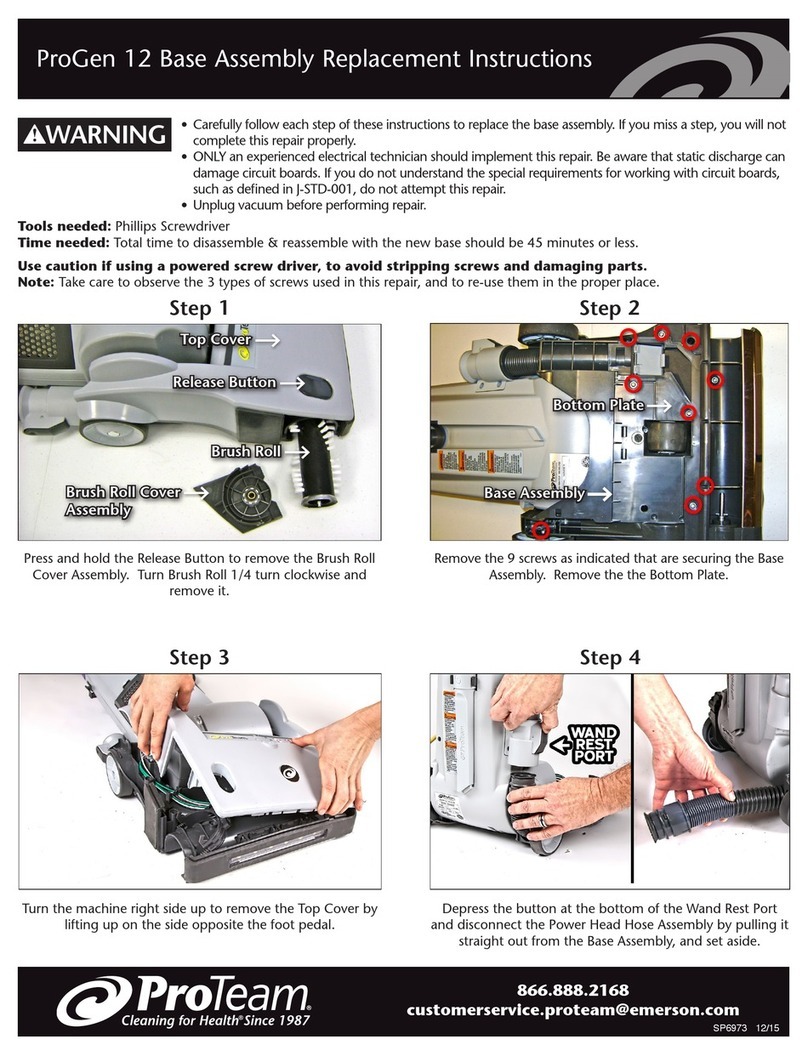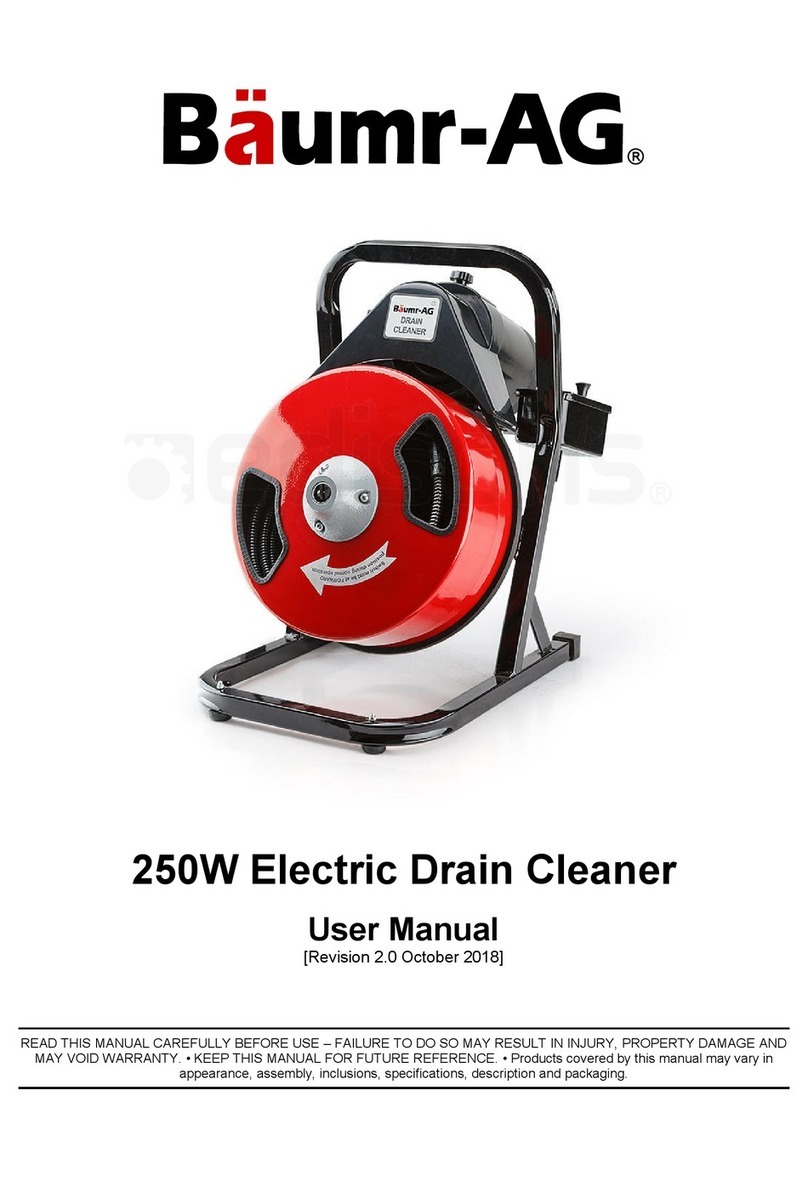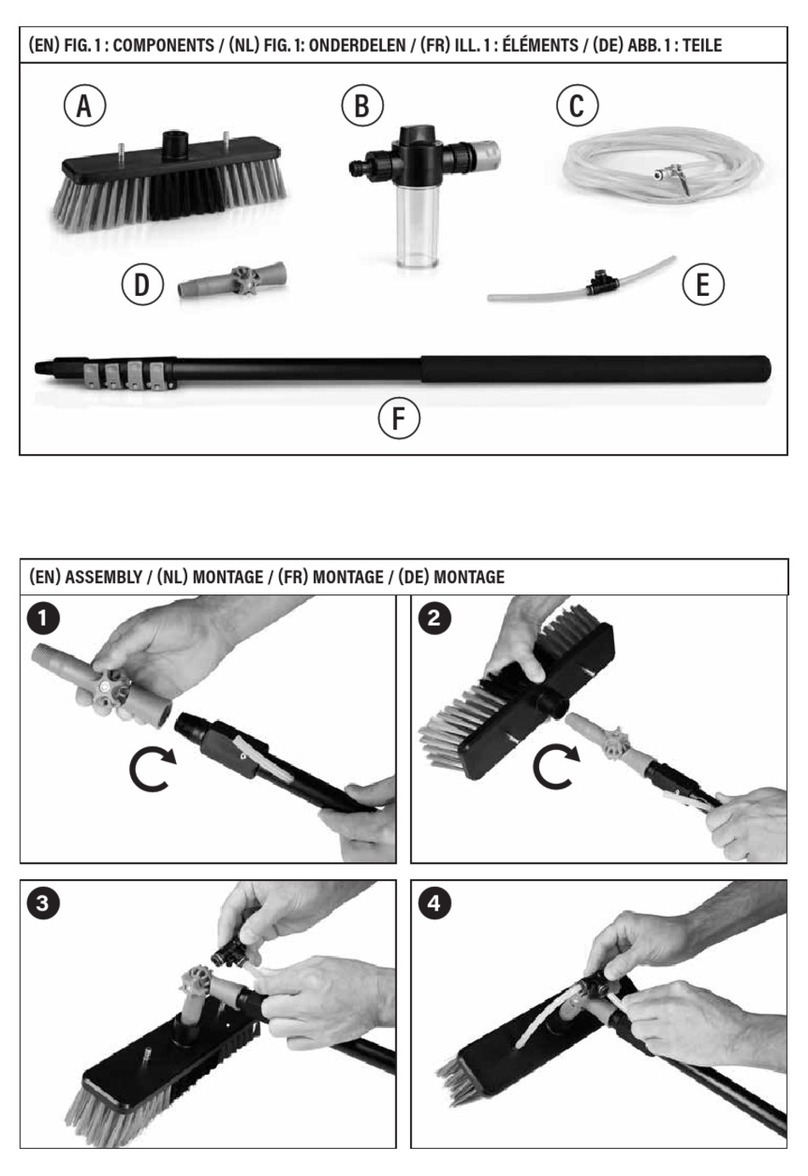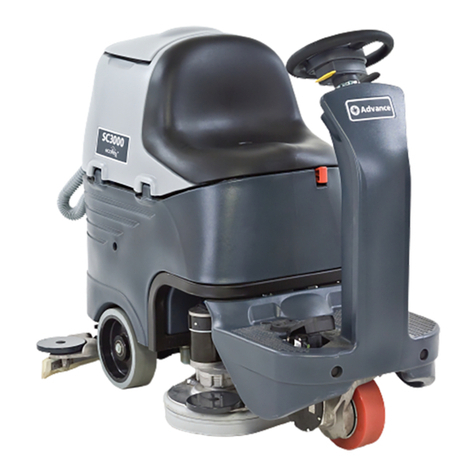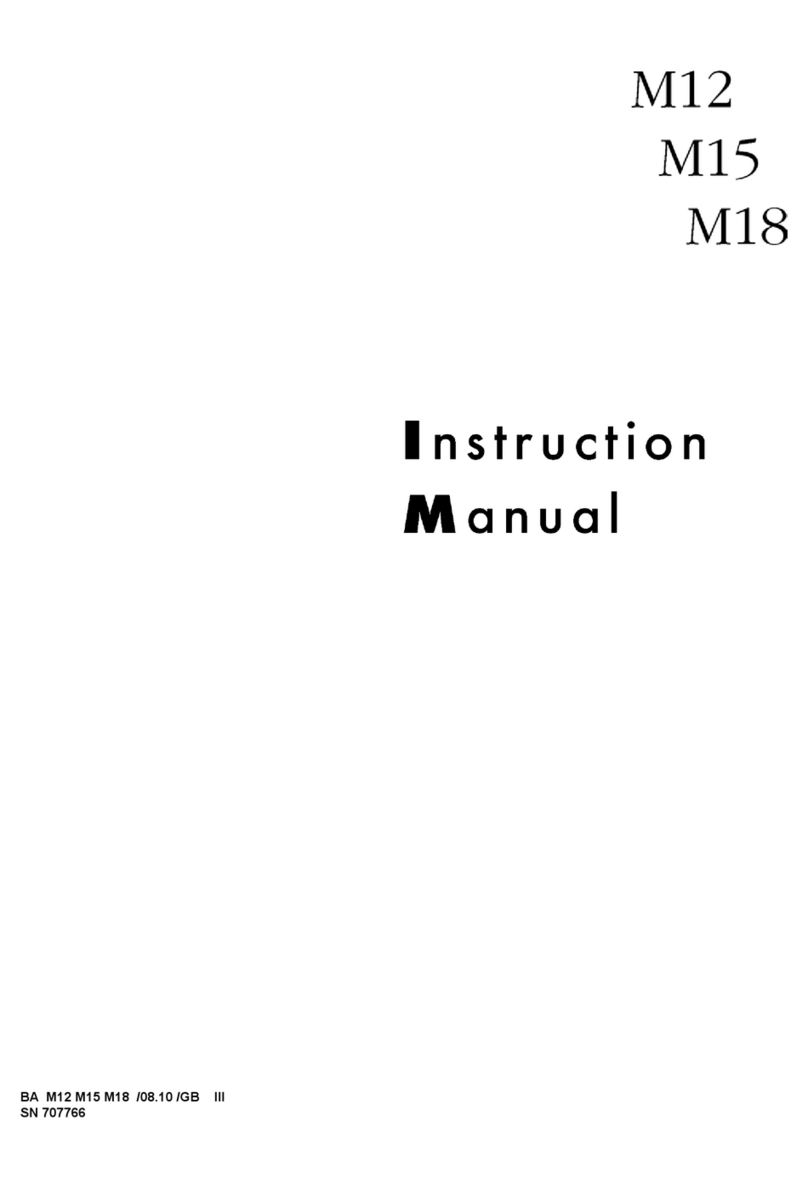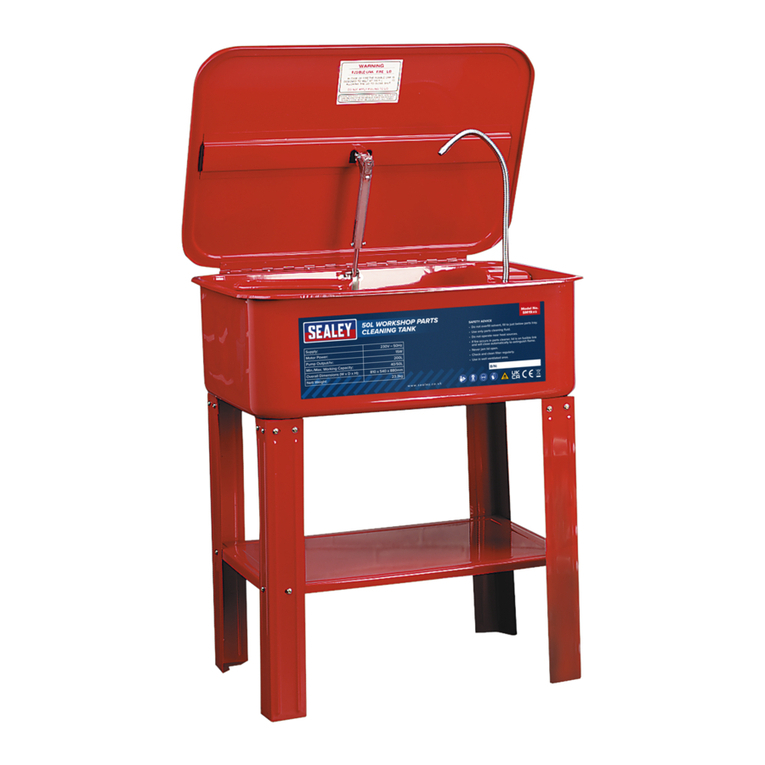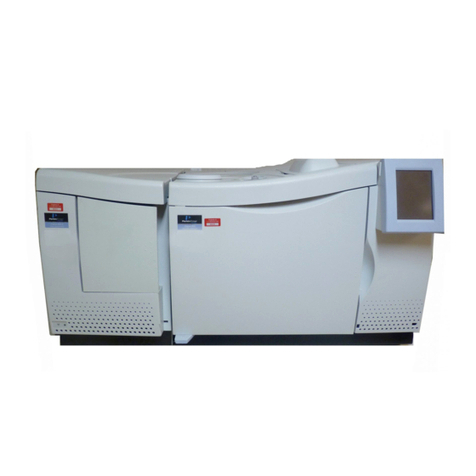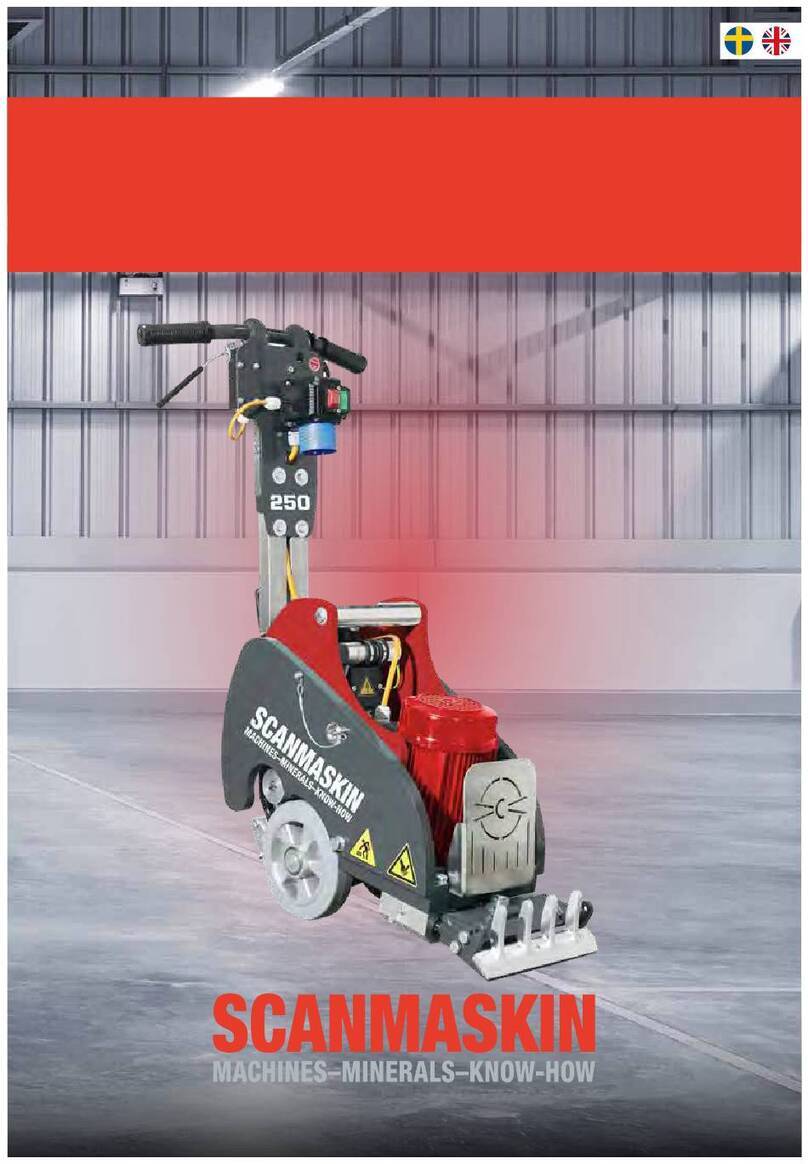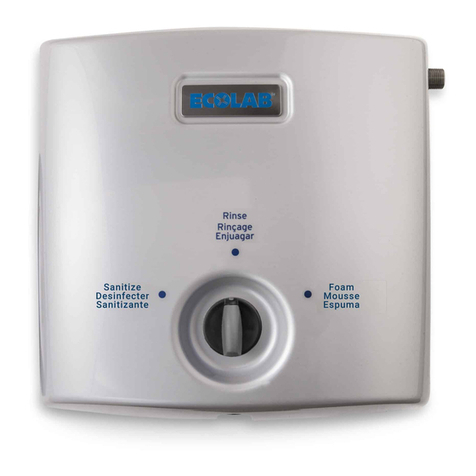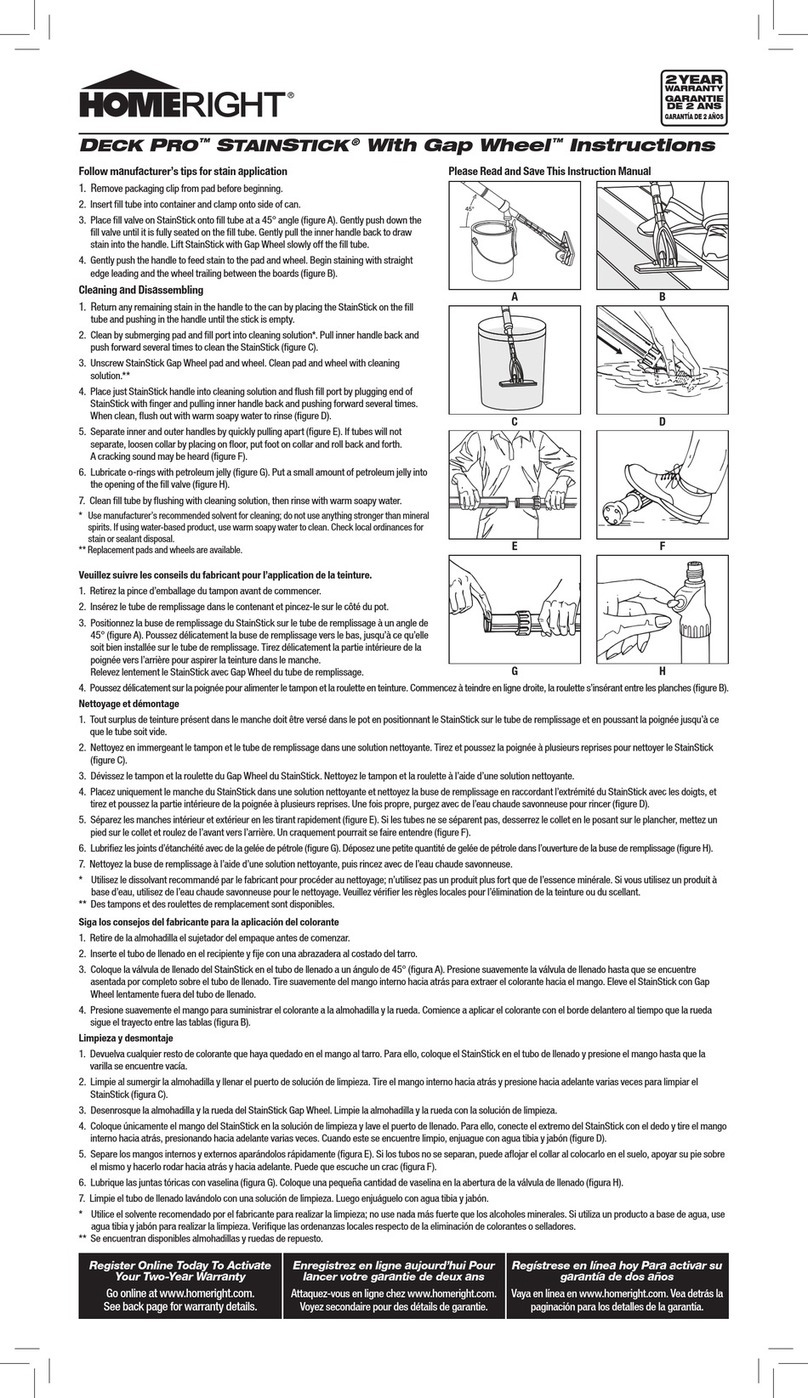Neumo AWH TANKO EX-R64T Product guide

A company of the NEUMO Ehrenberg Group
OPERATING/INSTALLATION INSTRUCTIONS
(Translation)
Container Cleaning System
TANKO®EX-R64T
with Cleaning Devices
TANKO®EX-RB-30 or TANKO®EX-S30
II 1 G Ex h IIB T6 Ga
II 1 D Ex h IIIC T60 °C Da
TPS 20 ATEX 055073 0009 X
Armaturenwerk Hötensleben GmbH
Schulstr. 5-6
D-39393 Hötensleben, Germany
Telephone: +49 39405 92-0
Fax: +49 39405 92-111
E-mail: [email protected]
Homepage: http://www.awh.eu ID number: 664BAR60000ENX - 2020/03 Rev. 0
0044

NOTE
These instructions are an integral part of the device and must be available to operating
and maintenance personnel at all times throughout its entire life cycle. The safety
instructions contained therein must be observed.
If the device is resold, the instructions must always be passed on to the new owner.
Translation
The operating instructions must be written in an official European Community language acceptable to
the manufacturer of the machine in which the partly completed machine will be installed, or to his
authorized representative. If there are any discrepancies in the translated text, the original operating
instructions (German) must be consulted for clarification, or the manufacturer must be contacted.
These instructions and all figures contained therein are protected by copyright. Any use beyond the
confines of copyright law is not permissible and liable to prosecution without the prior written approval
of the publisher. This applies in particular to reproductions, translations, microfilming, and storage and
processing in electronic systems.
© 2020 - Armaturenwerk Hötensleben GmbH. All rights reserved.

Container Cleaning System TANKO®EX-R64T
Contents Translation - Operating/installation instructions 2020/03 I
Contents
Contents................................................................................................................................................I
List of Figures .....................................................................................................................................III
List of Tables.......................................................................................................................................III
Abbreviations and Units .................................................................................................................... IV
1 Introduction ..................................................................................................................................... 1
1.1 Means of Representation .......................................................................................................... 1
1.1.1 Explanation of Signal Words............................................................................................ 1
1.1.2 Explanation of the Warnings ........................................................................................... 2
1.1.3 Pictograms and Symbols ................................................................................................. 4
1.2 Warranty and Liability................................................................................................................. 5
1.3 Product Names and Trademarks............................................................................................... 5
1.4 Related Documents.................................................................................................................... 5
2 Safety............................................................................................................................................... 6
2.1 Intended Use............................................................................................................................... 8
2.2 Spare Parts, Replacement Parts and Accessories .................................................................12
2.3 Duties of the Owner..................................................................................................................12
2.4 Personnel Requirements .........................................................................................................15
2.4.1 Personal Protective Equipment.....................................................................................16
2.5 Identification .............................................................................................................................17
2.5.1 Type Designation............................................................................................................17
2.5.2 Type Plate .......................................................................................................................17
2.5.3 Identification for Explosion Protection..........................................................................18
3 Design and Function .....................................................................................................................23
3.1 Design .......................................................................................................................................23
3.2 General Function Description ..................................................................................................25
3.3 Technical Data..........................................................................................................................27
3.4 Cleaning Media.........................................................................................................................31
4 Transport and Storage ..................................................................................................................36
4.1 Packaging..................................................................................................................................37
4.2 Transport...................................................................................................................................38
4.3 Storage......................................................................................................................................38
5 Installation.....................................................................................................................................40
5.1 Safety Instructions for Installation ..........................................................................................40
5.2 Installation ................................................................................................................................43
5.2.1 Interfaces........................................................................................................................44
5.2.2 Installation Position .......................................................................................................45
5.2.3 Installing the Device ......................................................................................................45
6 Start-up..........................................................................................................................................47
6.1 Safety Instructions for Start-up................................................................................................47
6.2 Function Check / Trial Run ......................................................................................................50

Container Cleaning System TANKO®EX-R64T
II Translation - Operating/installation instructions 2020/03 Contents
6.3 Switch-on Procedure.................................................................................................................50
6.4 Operation...................................................................................................................................52
7 Maintenance .................................................................................................................................56
7.1 Safety Instructions for Maintenance .......................................................................................56
7.2 Switch-off Procedure ................................................................................................................59
7.3 Removal.....................................................................................................................................60
7.3.1 Removing the Device .....................................................................................................61
7.4 Maintenance .............................................................................................................................62
7.4.1 Maintenance Intervals ...................................................................................................63
7.4.2 Tools and Tightening Torques .......................................................................................65
7.4.3 Notes on Cleaning ..........................................................................................................66
7.5 Spare Parts and Customer Service..........................................................................................68
8 Faults .............................................................................................................................................69
8.1 Safety Instructions for Troubleshooting ..................................................................................69
8.2 Faults and Remedial Action .....................................................................................................71
8.3 What to Do in an Emergency....................................................................................................71
9 Putting the Device out of Service..................................................................................................73
9.1 Disposal.....................................................................................................................................74
Index .................................................................................................................................................75
Annexes ............................................................................................................................................76
Notes.................................................................................................................................................81

Container Cleaning System TANKO®EX-R64T
Contents Translation - Operating/installation instructions 2020/03 III
List of Figures
Figure 2.5-1: Type plate position...................................................................................................................17
Figure 3.1-1: TANKO-EX-R64T device carrier without cleaning devices .....................................................23
Figure 3.1-2: Overview of the different combinations.................................................................................. 24
Figure 3.2-1: Design of actuator....................................................................................................................25
Figure 3.3-1: Length with and without devices ............................................................................................27
Figure 3.3-2: Consumption data for operation with TANKO-S30 360°......................................................30
Figure 3.4-1: Scope of delivery......................................................................................................................36
Figure 5.2-1: Interfaces..................................................................................................................................45
Figure 7.4-1: Maintenance points .................................................................................................................64
List of Tables
Table 1.1-1: Overview of signal words ............................................................................................................ 1
Table 2.5-1: Relationship between zones and device protection levels (EPL)...........................................18
Table 2.5-2: Explanation of EX marking –gas..............................................................................................20
Table 2.5-3: Explanation of EX marking –dust ............................................................................................21
Table 3.3-1: Operating parameters...............................................................................................................29
Table 3.3-2: Type series for standard lengths..............................................................................................29
Table 3.3-3: Material combinations: body –balls........................................................................................29
Table 7.4-1: Inspection and maintenance work...........................................................................................65
Table 8.2-1: Operational Disruptions –Cause and Remedy .......................................................................71

Container Cleaning System TANKO®EX-R64T
IV Translation - Operating/installation instructions 2020/03 Contents
Abbreviations and Units
Abbreviations
ATEX
ATmosphère EXplosible; synonym for the ATEX Directives of the European Union;
comprises measures for explosion protection for explosive atmospheres
AWH
Armaturenwerk Hötensleben GmbH
BetrSichV
Betriebssicherheitsverordnung (German industrial safety and health protection ordinance);
ordinance concerning health and safety when using work equipment; German
implementation of Directive 2009/104/EC of the European Parliament concerning the
minimum safety and health requirements for the use of equipment by employees at work
or
or
approx.
approximately
CIP
Cleaning in Place; a local (automated) cleaning process without dismantling plant
components. Refers to a procedure for cleaning processing plants, predominantly in
sectors with particularly critical hygiene requirements, such as the pharmaceutical
industry, food and beverage industry or biofuel plants.
DIN
Deutsches Institut für Normung e.V.; is a national standards organization in the Federal
Republic of Germany; the standards of this organization are referred to as DIN standards.
EN
European Standard (Norm)
EPL
Protection level of the device (Equipment Protection Level)
G
Thread identifier for cylindrical Whitworth pipe threads
if nec.
if necessary
ISO
International Organization for Standardization
L
Length
LEX,8h
Daily noise exposure level
LPA
Emission noise pressure level at workplace
MA [MC]
Media connection
In the context of these instructions, this term describes the interface used in cleaning
technology for supplying cleaning medium from the supply line to the device.
max.
maximum
min.
minimum
PA [PC]
Process connection
In the context of these instructions, this term describes the interface used in cleaning
technology for the connection to the process from the device to the container.
Ra
Average roughness value (dimension for surface roughness)
CD
Cleaning device
SI
Système international d'unités; the most widely used international system of units for
physical values

Container Cleaning System TANKO®EX-R64T
Contents Translation - Operating/installation instructions 2020/03 V
SN
Serial number
SW [AF]
Width across flats [wrench size]
TRBS
“Technische Regeln für Betriebssicherheit”(German technical rules for operational reliability
and safety); these rules specify the details of the “Betriebssicherheitsverordnung”
(BetrSichV = German industrial safety and health protection ordinance) with regard to the
identification and assessment of hazards and the derivation of suitable measures.
TRGS
“Technische Regel für Gefahrstoffe”(German technical rules for hazardous materials);
these rules reflect the state of the art, occupational medicine and occupational hygiene as
well as other sound scientific knowledge for activities involving hazardous substances,
including their classification and identification.
etc.
and so on
veff
effective vibration velocity
ASSY
Assembly
Units of Measure
The following factors given below are intended for orientation and the conversion of the SI units
to common units of measure for the American market.
bar
Unit of measure for pressure p [bar]
All pressure [bar] specifications stand for positive pressure [barg] unless expressly
described otherwise.
Conversion: 1 bar = 14.50376… psi [pound-force per square inch]
°C
Unit of measure for temperature T [degrees Celsius]
Conversion from Celsius to Fahrenheit: °C 1.8 + 32 = °F [degrees Fahrenheit]
h
Unit of measure for time t [hour]
K
Unit of measurement for temperature T and temperature differences ΔT [Kelvin]
Conversion: 273.15 K = 0 °C
kg
Unit of measure for mass m [kilogram]
Conversion: 1 kg = 2.20462 … lb [Latin: libra; pound]
l/min
Unit of measure for volume flow rate V [liters per minute]
Conversion: 1 l/min = 0.06 m3/h [cubic meters per hour]
1 l/min = 0.26417 … gpm (US) [gallons per minute (US)]
1 m3/h = 4.40286 … gpm (US) [gallons per minute (US)]
lx
Unit of measure for luminance intensity Ev[lux]
m
Unit of measure for length l [meter]
Conversion: 1 m = 3.28083… ft [feet]
mm
Unit of measure for length l [millimeter]
Conversion: 1 mm = 1/25.40005 in [inch] = 0.03937 in [inch]

Container Cleaning System TANKO®EX-R64T
VI Translation - Operating/installation instructions 2020/03 Contents
Nm
Unit of measure for moment/torque M [newton meter]
Conversion: 1 Nm = 0.737 lbft [pound-force feet]
rpm
Unit of measure for speed n [revolutions per minute]
Conversion: 1 rev/min = 1 rpm [revolutions per minute]
µm
Unit of measure for length l [micrometer]
pS/m
Unit of measure for electrical conductivity of materials κ [picosiemens per meter]

Container Cleaning System TANKO®EX-R64T
1Introduction Translation - Operating/installation instructions 2020/03 1/80
1Introduction
These operating/installation instructions (referred to hereinafter as instructions) are an integral part of the
device. They provide you with all the information required for smooth operation of the TANKO®EX-R64T
cleaning system (referred to hereinafter as the device).
The instructions must be read, understood, and applied by all persons assigned to carry out installation
and assembly, start-up, maintenance, cleaning and troubleshooting of the device. This applies in
particular to the safety instructions listed.
After studying the instructions, you will be able to
–install and operate the device safely,
–clean and service the device correctly and
–take the correct action if a fault occurs.
In addition to these instructions, generally applicable, statutory and other binding regulations for the
prevention of accidents and for environmental protection in the country of use must also be observed.
The instructions must be kept at the place of use of the device so that they are available in legible condition
at all times. If the device is resold, the instructions must always be passed on to the new owner.
Download the instructions, if nec., from the website: http://www.awh.eu/de/downloads.
1.1 Means of Representation
1.1.1 Explanation of Signal Words
The warnings are introduced by a signal word that describes the extent of the hazard. Their meaning
and their classification in hazardous situations are explained in the following overview.
Signal Word
Meaning
Consequences of Failure to Observe
DANGER
Hazard with a high level of risk
Death or severe physical injury
WARNING
Hazard with a moderate level of risk
Death or severe physical injury
CAUTION
Hazard with a low level of risk
Minor or moderate physical injury
NOTE
Hazard with a low risk
Risk of material damage
NOTE ON
EXPLOSION
PROTECTION
Important note on explosion
protection
Loss of explosion protection and resulting
hazards
Table 1.1-1: Overview of signal words

Container Cleaning System TANKO®EX-R64T
2/80 Translation - Operating/installation instructions 2020/03 1Introduction
1.1.2 Explanation of the Warnings
Section-Related Warnings
The section-related warnings apply not only to one particular action, but to all actions within a section.
In addition, the pictograms and symbols indicate a general or specific danger.
DANGER
This warning warns of a hazard with a high level of risk!
Failure to observe it can result in death or severe physical injury.
Measure(s) to prevent the danger
WARNING
This warning warns of a hazard with a moderate level of risk!
Failure to observe it can result in death or severe physical injury.
Measure(s) to prevent the danger
CAUTION
This warning warns of a hazard with a low level of risk!
Failure to observe it can result in minor or moderate injury.
Measure(s) to prevent the danger
NOTE
This warning warns of a hazard with a slight level of risk!
Failure to observe it can result in material damage.
Measure(s) to prevent the danger
NOTE ON EXPLOSION PROTECTION
This note contains instructions regarding explosion protection.
Non-compliance can disable the explosion protection, thus resulting in hazards.

Container Cleaning System TANKO®EX-R64T
1Introduction Translation - Operating/installation instructions 2020/03 3/80
Embedded Warnings
The embedded warnings apply to specific actions and are integrated directly into the action before the
specific action step.
The embedded warnings are structured as follows.
SIGNAL WORD type and source of the danger
Possible consequences in case of failure to observe
Measure(s) to prevent the danger
Further Means of Representation
The Information symbol provides useful information, additional tips and recommendations.
–
Texts that follow this mark are enumerations.
Texts that follow this mark describe measures for avoiding the danger.
1.
Texts that follow this numbering describe the first step of a task, followed by further numbered
steps that have to be performed in the specified order.
a)
Texts that follow this lettering as subitems of a numbering (e.g. 1) describe the first step of a task of a
higher-level task, followed by further lettered steps that have to be performed in the specified order.
(1)
Numbers in parentheses reflect the item numbers in figures or parts lists.
“”
Texts in quotation marks are (direct) quotes from documents (e.g. directives or standards) or
words, groups of words and parts of a text with a special meaning.
Important, significant information is additionally highlighted in bold type, italics or CAPITAL
LETTERS for individual words or phrases.

Container Cleaning System TANKO®EX-R64T
4/80 Translation - Operating/installation instructions 2020/03 1Introduction
1.1.3 Pictograms and Symbols
The following pictograms and symbols are used as an additional measures in warnings to clarify the
sources of dangers and measures. They can appear at all danger levels.
Warning of electrical
voltage
Warning of a potentially
explosive atmosphere
Warning of hand
injuries
Warning of a hot
surface
Warning of corrosive
substances
Warning of substances
that pose a water
hazard
Unauthorized access
prohibited
Wear protective work
clothing
Wear safety shoes
Wear protective gloves
Wear safety goggles
Wear a hard hat
Wear hearing protection
Wear a welding mask
Isolate from power
supply before work
Follow instructions
Protective grounding
connection required
Secure against power
supply being switched
back on
Return for recycling
Equipment for Ex zone

Container Cleaning System TANKO®EX-R64T
1Introduction Translation - Operating/installation instructions 2020/03 5/80
1.2 Warranty and Liability
The obligations agreed in the contract of supply and delivery, the general terms and conditions and the
terms of delivery of Armaturenwerk Hötensleben GmbH (referred to hereinafter as AWH) and the
statutory regulations valid at the time the contract was concluded shall apply.
Warranty and liability claims in case of personal injury and material damage shall be ruled out, in
particular if these can be attributed to one or more of the following causes:
–improper or incorrect use of the device,
–improper assembly and installation, start-up, operation and maintenance of the device,
–failure to observe the notes in the instructions regarding assembly and installation, start-up,
operation and maintenance of the device,
–constructional modifications to the device (conversions or other modifications to the device must not
be made without the previous written approval from AWH. In case of infringement, the device will
lose its EC conformity and the operating permit.),
–use of spare parts that do not comply with the specified technical requirements,
–improperly performed repairs,
–disasters, the effects of foreign matter and force majeure.
Disclaimer
AWH reserves the right to make changes to this document at any time and without prior notice. AWH
provides no guarantee (neither explicitly nor implied) with regard to all information in this document,
including but not limited to the implied warranty of merchantability and suitability for a particular
purpose. Furthermore, AWH does not guarantee the correctness or completeness of information, text,
graphics or other parts in this document.
1.3 Product Names and Trademarks
The product names and trademarks included in these instructions are brands or registered trademarks
of the respective owners.
TANKO®and AWH®are registered trademarks of Armaturenwerk Hötensleben GmbH.
1.4 Related Documents
The following documents may contain additional information to these instructions:
–Manufacturer's declarations and/or certificates of conformity
–Certificates
–Additional documents for any attached or upstream components, e.g. drawings, performance data,
information on accessories etc.
–Additions to these instructions (e.g. special versions)
–AWH catalog, product data sheet

Container Cleaning System TANKO®EX-R64T
6/80 Translation - Operating/installation instructions 2020/03 2Safety
2Safety
The device was built in accordance with state-of-the-art technology and the recognized safety rules.
Nevertheless, the use of the device may still pose a danger to the life and limb of the user and third parties
or a risk of impairments to the device and other objects of material value as a result of its function.
The following basic safety instructions are intended to prevent injury to personnel and material damage.
The owner must ensure that the basic safety instructions are observed and adhered to.
These instructions contain basic notes on installation, operation, maintenance and servicing of the
device that must be complied with.
Everyone involved in assembly, installation, operation, maintenance and servicing must have read and
understood these instructions.
The safety systems and safety instructions described in these instructions must be adhered to.
WARNING
Failure to comply with these instructions, incorrectly performed installation and repair
work or incorrect operation could lead to malfunctions at the device and to dangerous
situations!
There is a risk of death or severe physical injury.
Have all work performed on the device carried out by an expert only and in compliance
with
–the corresponding detailed operating and installation instruction(s),
–the warnings and safety signs on the device,
–the regulations and requirements specific to the plant and
–the national/regional regulations for safety and the prevention of accidents.
Never install damaged devices or components.
The figures in these instructions are intended to provide a basic understanding, and are primarily
illustrations of the principles involved. They may deviate from the actual design of the device.
For maintenance and repairs, we recommend a training course provided by the manufacturer
or by a person authorized by the manufacturer.
If you have questions or doubts about handling the cleaning device, please contact AWH.

Container Cleaning System TANKO®EX-R64T
2Safety Translation - Operating/installation instructions 2020/03 7/80
Integrated Safety Systems
The integrated safety equipment used by the higher-level plant in which the device is installed is to be
checked at regular intervals.
WARNING
Dangerous situations will result from modifying or disabling safety devices!
Only functioning safety equipment can ensure safe operation and prevent non-
permissible operating conditions.
Modifying or disabling safety equipment can result in unforeseen and dangerous situations.
There is a risk of death or severe physical injury.
Disabling the safety equipment or changing the way it works is strictly prohibited.

Container Cleaning System TANKO®EX-R64T
8/80 Translation - Operating/installation instructions 2020/03 2Safety
2.1 Intended Use
WARNING
Risk of hazardous situations caused by use other than the intended use and/or other
types of use of the device!
There is a risk of death or severe physical injury.
Only use the device as intended.
–Only use the device in accordance with the specifications contained in these
instructions and the specifications on the device's type plate.
–All specifications in these instructions must be adhered to at all times.
–Always keep the operating instructions at the location where the device is used.
–Keep all signs on the device in legible condition.
–Only use original spare parts.
Modifications or conversions to the device are NOT permitted.
WARNING
Danger from incorrect use of materials/media!
The materials/media to be used for operation of the device as intended are procured and
utilized by the owner of the device.
If unsuitable materials/media are selected, strong chemical reactions could result in fatal
injury or severe physical injuries.
The proper selection and handling of these materials/media is the sole responsibility
of the owner.
When selecting the materials/media, make sure that the permitted technical
parameters of the device are NOT exceeded.
The cleaning media and agents must be approved for all materials of the device (e.g.
washers, bushings) and for the substances in the container to be cleaned that come
into contact with them.
Adhere to the specified chemical limits for use in the material data sheets.
Adhere to the safety data sheets provided by the manufacturers of the materials and
media, in particular for hazardous substances:
–Comply with the hazard and disposal instructions.
–Specify protective measures and compile operating instructions for hazardous
substances.
–This also applies to hazardous substances that may develop during work processes.
Refer to the order confirmation/parts list from AWH for the materials used in the device.
The TANKO-EX-R64T with the TANKO-EX-S30 or TANKO-EX-RB-30 combination is a cleaning system
without an external actuator. The device is driven by the cleaning medium. The device is used for
cleaning the interiors of containers with and without installed equipment.
For the purpose of these instructions the word container refers to closed tanks, silos, drums,
containers, pipes, etc. that are provided with a drain that ensures that the supplied cleaning medium
can drain freely.

Container Cleaning System TANKO®EX-R64T
2Safety Translation - Operating/installation instructions 2020/03 9/80
When using the device, it is necessary to distinguish between the following operating states.
Operating state - cleaning process (cleaning > cleaning agent is sprayed and spray head rotates)
In this case, flammable gases, vapors, mists or flammable dust may already be present in the container
or are only added by the intended cleaning process in the form of sprayed fluid (aerosol).
Flammable vapors and mists must be expected as soon as flammable fluids with a flash point of 15 K
above the cleaning medium temperature are sprayed, including those permitted in accordance with
Section 3.4 Cleaning Media. For this reason, both the conditions in the container and the type and
temperature of the cleaning medium must be taken into account when defining the following three
process conditions:
A) During cleaning, no explosive mixture is present, nor is it possible for one to develop from the
cleaning medium. (Explosive mixtures consist of flammable gases, vapors, mists or stirred-up dust
in the air or another oxidizing agent that reacts to a self-propagating flame when an ignition source
becomes active, generally causing an abrupt increase in temperature and pressure).
Pressure in the container: 0 to 0.5 bar (0 to 7.25 psi g)
Temperature of the cleaning medium: +5 °C to 180 °C
Ambient temperature in the container to be cleaned: +5 °C to +180 °C
B) A potentially explosive atmosphere (ATEX conditions) is present during cleaning (A potentially
explosive atmosphere is a potentially explosive mixture with air as an oxidizing agent under
atmospheric conditions (ambient temperature of -20 °C to +60 °C and absolute pressure of 0.8 bar
a to 1.1 bar a, that is already present before the use of the device, or that develops when spraying a
cleaning medium during the cleaning process)
Pressure in the container: 0 to 0.1 bar (0 to 1.45 psi g)
Temperature of the NON-flammable cleaning medium: +5 °C to +60 °C
Temperature of the flammable cleaning medium: +5 °C to flash point T flash point -15 °C (max. +60 °C)
Ambient temperature in the container to be cleaned: +5 °C to +60 °C
C) A potentially explosive mixture is present during cleaning, but there is no explosive atmosphere.
Cleaning is PROHIBITED! If necessary, the process conditions must be changed before using the
device so that process conditions exist in accordance with A) or B).
For processes that are outside atmospheric conditions, the owner must make a differentiated
assessment of the effects.
The necessary safety-related parameters must be determined and an additional hazard assessment
must be created for explosion hazards in order to separately verify the suitability of the device used.
The cleaning process with the TANKO-R64T tank cleaning device with TANKO-EX-S or TANKO-EX-RB
attached is prohibited in operating conditions that result in explosive mixtures outside atmospheric
conditions (outside temperatures of −20 °C to +60 °C and absolute pressures of 0.8 bar a to 1.1 bar a)
in the container to be cleaned or in the presence of oxidizing agents other than air.
The cleaning process with the TANKO-R64T tank cleaning device with TANKO-EX-S or TANKO-EX-RB
attached is also prohibited in the presence of explosive mixtures with ignitable substances such as
hydrogen, ethylene, acetylene, carbon disulfide, carbon monoxide, ethylene oxide and trichlorosilane.

Container Cleaning System TANKO®EX-R64T
10/80 Translation - Operating/installation instructions 2020/03 2Safety
Operating state - idle state (NO cleaning > cleaning medium is NOT sprayed, TANKO-R64T and attached
spray heads are stationary)
Pressure in the container: Depending on the permissible maximum pressure of the attached fittings
including media supply. The media supply must be closed tightly, the cleaning device does not have
its own shut-off device
Ambient temperature in the container to be cleaned: -20 °C to 180 °C
The device was developed, engineered and built exclusively for industrial and commercial use. It must
not be used for private purposes.
Its use is also possible if there is a potentially explosive dust or gas atmosphere in the container to be
cleaned or if one could develop.
The TANKO-EX-R64T device is suitable for use in a potentially explosive atmosphere of Zone 0 or
Zone 20.
Only the TANKO-EX-S30 or TANKO-EX-RB-30 may be used as cleaning devices.
For the Ex marking, also note the additional information on the type label (see section 2.5.3
Identification for Explosion Protection).
The owner must always check whether the device is suitable for his application.
NOTE ON EXPLOSION PROTECTION
The area of application of the device must always be adapted to the corresponding
operating conditions and the materials in contact with the product. These materials must
be selected so that there are no reactions between them and the cleaning medium or the
substances in the container to be cleaned, which could impair explosion safety.
It must be ensured that no hybrid mixtures can develop in the container or in the
environment (a hybrid mixture is a mixture of air with flammable substances in different
aggregate states, e.g. gas / vapor and dust)
If this is not observed, the explosion protection could be disabled.
Locations for containers in which the device is to be installed are usually closed rooms. If the set-up is
different, the owner is responsible for ensuring the device is protected against harmful weather and
environmental influences in compliance with the specified operational limits / conditions (see Section 3.3
Technical Data).
Always observe the following:
Only operate the device when installed in a closed container.
Never point the cleaning jet or surge of the device at persons.
Protect the device from freezing (e.g. risk of frost from possible residual water).
Use a suitable filter system in the cleaning medium supply line.
Only operate the device within the approved parameters such as pressure and temperature
(see Section 3.3 Technical Data). If necessary, appropriate monitoring and limiting systems
(e.g. for pressure and temperature) must be used.
Only cleaning media that are compatible with the materials of the device may be used (see Section 3.4
Cleaning Media).

Container Cleaning System TANKO®EX-R64T
2Safety Translation - Operating/installation instructions 2020/03 11/80
The preferred installation position of the device (see Section5.2.2 Installation Position).
The device could vibrate while the container is being cleaned. Any other vibrations must be avoided
(see Section 7.4.1 Maintenance Intervals).
The device is designed for a fixed pipe installation only. Installation on a hose is PROHIBITED.
Non-intended Use
The device is NOT suitable for the following applications:
The device is NOT suitable for private use.
The device is NOT suitable for use outside containers.
Holding the device with your hand during operation is PROHIBITED.
The device must NOT be immersed in the product of the production process (NOT even partially).
This could cause the product to penetrate the device. The spray holes of the attached cleaning
devices could become blocked. The free movement of the actuator could be obstructed.
The device must NOT by operated with gases (e.g. air) over a long period, as the cleaning medium is
used for lubrication of the bearings.
This device is intended exclusively for the purpose outlined above. Any other use beyond that described
here or any conversion of the device without a written agreement with the manufacturer is considered
IMPROPER use.
The manufacturer accepts NO liability for damage arising from such improper use. The owner bears the
sole risk.
The device must not be put into operation until it has been assured that all the safety equipment is in
fully working order and the plant in which the device is installed meets the safety requirements of all
relevant European directives (e.g. the Machinery Directive).

Container Cleaning System TANKO®EX-R64T
12/80 Translation - Operating/installation instructions 2020/03 2Safety
2.2 Spare Parts, Replacement Parts and Accessories
WARNING
Risk of damage, malfunction or complete failure of the device!
Incorrect or faulty spare/replacement parts and accessories will put the functional safety
and reliability of the device at risk. This could result in the failure of components or a
device malfunction, as well as material damage and consequential damage.
There is a risk of death or severe physical injury.
Only use the manufacturer's original spare parts.
We would like to explicitly draw your attention to the fact that spare parts and accessories NOT supplied
by AWH have NOT been checked or approved by AWH. The installation and/or use of such products
could therefore, under certain circumstances, result in changes with negative results to the properties
of the device specified by its design and the higher-level plant.
AWH is not liable for any damage resulting from the use of non-original parts or non-original
accessories. Standard parts can be obtained from specialist dealers.
2.3 Duties of the Owner
The device is used in the commercial sector. The owner is thus subject to the legal obligations regarding
occupational safety.
In the EEA (European Economic Area), the national implementation of the Framework Directive
(89/391/EEC) on taking measures for improving safety and protecting the health of employees during
work, as well as the associated individual directives shall be observed and complied with in their
current valid versions.
The Directive (2009/104/EC) on the minimum specifications for the safety and health protection of
employees using equipment for their work is of particular importance in this context.
As a basic rule, in Germany the Industrial Safety and Health Protection Ordinance (BetrSichV) must be
observed.
In other countries, the respective national guidelines, statutes and country-specific regulations
regarding occupational safety and accident prevention must be complied with.
The following, non-exhaustive instructions apply in particular:
–The owner must ensure that the device is used only as intended (see Section 2.1 Intended Use).
–The owner must keep himself informed of the locally applicable occupational health and safety
regulations and, in addition, use a hazard assessment to determine the hazards resulting from the
specific working conditions at the location of use of the device. These must then be implemented in
the form of operating instructions for operation of the device.
–When using hazardous materials, protective measures must be specified in accordance with the
safety data sheets and operating instructions must be compiled for hazardous materials. Personnel
must be instructed accordingly. This also applies to hazardous substances that may develop during
work processes.
–A continuous hazard assessment must be carried out for workplaces, including temperature
conditions for the medium and the place of use (falling). The measures are to be defined in
operating instructions. Personnel must be instructed accordingly.
–Supervisors must monitor compliance with the measures specified in the operating instructions.
–Throughout the entire operating period of the device, the owner must check whether the operating
instructions he has compiled reflect current legislation requirements and adapt them as necessary.
This manual suits for next models
4
Table of contents
